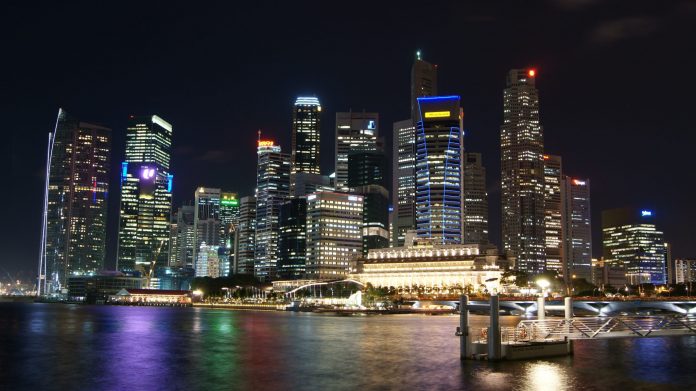A lot has been said about the new blockbuster Crazy Rich Asians. Whilst the film has been flooded with praise centred around its ground-breaking representation of Asian-Americans in the traditionally white and Western-centric entertainment industry, it has also been subject to damning criticism over its erasure of non-Chinese minorities, its excessive glorification of wealth against a socioeconomically stratified Singapore and its casting decisions. However, independent of the film’s merits and drawbacks, the discussion it has provoked is exemplar of how pop culture can shape sociocultural dialogue.
Firstly, the polarised public reception towards Crazy Rich Asians aptly encapsulates the fact that one’s perceptions are greatly shaped by the context in which one lives or grows up. I’ve had Australian-Chinese friends on my Facebook newsfeed describe the opportunity to watch a Western production about Asian immigrants, delivered with cultural nuances and Chinese subtleties in place of the stale tropes, as an innately empowering experience.
Yet – as rightly noted by critics such as Sangeetha Thanapal – this observation neglects the lived experiences of ethnic minorities in Singapore, whose representation in the film varies from entrenched stereotypes to nothing at all. Additionally, Crazy Rich Asians captures only a monotonic impression of the immigrant experience by simply appealing to the alternative Western stereotypes of Chinese affluent families as both ‘conservative’ and ‘classist’ in how they appraise human relationships.
Whilst some individuals can deeply relate to the film, others feel alienated and misrepresented by it. Both responses are perfectly legitimate; rather than seeing Crazy Rich Asians as monolithically positive or negative, we are better off recognising it as simultaneously empowering and disempowering.
Secondly, the debate surrounding Crazy Rich Asians has significantly raised the profile of frequently disregarded social issues. Whilst activist discourse may struggle to reach politically apathetic members of the public, the recent fad for Crazy Rich Asians has given alienated minority groups a platform to denounce the institutional racism confronting minorities in Singapore.
Mainstream media outlets have been incentivised to publicise these voices of dissent towards Crazy Rich Asians to demonstrate ideological balance and differentiate their coverage of the film. The erroneous stereotypes in the film serve as visual embodiments of misrepresentation and non-representation, providing activists with prominent examples of how cultural erasure is perpetuated in popular culture.
Thirdly, the critique of Crazy Rich Asians has been pivotal in highlighting that non-representation can be just as bad as misrepresentation. The most common defence of the film against criticism over its presentation of minority groups is this: “It’s just one story about one aspect of Singaporean society – the Chinese experience. There is no reason why it ought to portray all ethnicities equally, if at all.”
This argument might have had some traction if the film directors had not chosen to cast ethnic minority members in largely stereotypical menial roles such as security guards and cleaners. In doing so, Crazy Rich Asians gives off the impression of being willing to offer representation to non-Chinese ethnic minorities whilst simultaneously perpetuating harmful stereotypes about them.
Yet even if we were to overlook the overt misrepresentation within the film, we ought to recognise that non-representation can itself be a form of misrepresentation. Its very title, Crazy Rich Asians, claims that the film is a story about ‘Asians’; yet this, when coupled with the apparent exclusion of most non-Chinese Asians from the storyline, transforms the seemingly harmless omission of non-Chinese individuals into an actively pernicious form of cultural erasure.
For many foreign audiences whose first impressions of Singapore may well be heavily shaped by watching the film, Crazy Rich Asians offers a prominent image of what Singapore looks like. Given this, the non-representation of ethnic minorities frames them, if not out of perceived existence, then at the very least as unimportant or secondary components of Singaporean society. In this way, the discussion provoked by the film’s release serves as a timely reminder that those who embrace greater representation on the big screen should not forget those who are left behind through non-representation.
Ultimately, it’s not my place to judge whether Crazy Rich Asians has on balance had a positive or negative societal impact. However, the sociocultural dialogue sparked by the film’s release highlights that whilst a work of art can be deeply flawed, discussion about that work, particularly regarding its interaction with wider society, may prove invaluable.
For Cherwell, maintaining editorial independence is vital. We are run entirely by and for students. To ensure independence, we receive no funding from the University and are reliant on obtaining other income, such as advertisements. Due to the current global situation, such sources are being limited significantly and we anticipate a tough time ahead – for us and fellow student journalists across the country.
So, if you can, please consider donating. We really appreciate any support you’re able to provide; it’ll all go towards helping with our running costs. Even if you can't support us monetarily, please consider sharing articles with friends, families, colleagues - it all helps!
Thank you!






